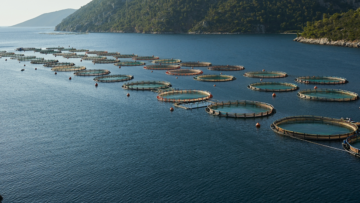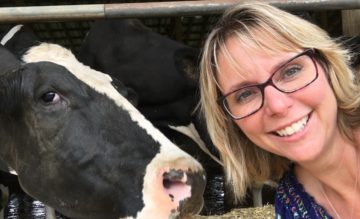COVID-19 and Euthanasia: The Worst Reality
A couple months ago, I received some sad news from a dear friend about their family companion, Tank, a happy-go-lucky black Labrador retriever. Tank’s veterinarian had discovered a large tumor at the base of his tongue that was causing him to drool and have difficulty eating. Unfortunately, the tumor was inoperable, and the family was heartbroken. They switched Tank to a soft food diet and put him on medication to keep him comfortable.
A few weeks later, my friend reached out again for advice as the family contemplated the difficult decision of saying goodbye to Tank (euthanasia). Our talk centered on his quality of life. I asked several questions to make sure I could assess the facts and then make a recommendation.
- Is Tank able to eat and drink?
- Does he play?
- Is he in pain or uncomfortable?
Making the right call in the best interest of Tank was understandably emotionally draining for my friend. There are no easy answers and there are many things to take into consideration in the decision-making process.
As an animal lover, I understand this is one of the most painful situations one faces. In the case of Tank, I didn’t separate the facts from the deep emotions I felt. In fact, this happens each time I work with animal caretakers.
Sometimes the needs of an animal are simple. And oftentimes, the situation is far more complex. When disease or an injury are too great, when an animal’s well-being is being threatened, when their quality of life has decreased dramatically – there’s often only one remaining option to end suffering.
This decision is heartbreaking for pet owners in the same way it is for farmers who, as a result of the pandemic, are now faced with a similar decision.
If you’re wondering why, there’s a simple answer that’s tied to our incredibly complex, yet efficient food system. As you already know, COVID-19 has affected everyone, everywhere. This includes thousands of essential workers at meat processing plants, some of which shut down temporarily due to COVID-19 outbreaks. Hundreds of these workers are unable to return to work for a variety of reasons, including isolating at home as a precaution or to recover from the virus. Some plants made the decision to temporarily shut down in order to do some extra deep cleaning or to install additional human health protective measures to protect their workers. As a result, the ability for those processors to function at full capacity has been crippled. That’s why you may see limits on meat purchases at your favorite grocery store.
Typically, our U.S. food system is very efficient – and it may be easiest to think about it in terms of a well-planned garden. You map out your plot, invest in the right supplies, plant seeds in the ground in spring, you pull weeds, provide water and nutrients, even put up structures like stakes – all to help those plants thrive through their life cycle. And if all goes well, you have a product that becomes perfectly ripe – allowing you to (literally) enjoy the fruits of your labor. Sometimes we miss that window, and the produce can spoil on the vine or become overripe.
Raising animals is certainly different than growing plants, but the basics are the same – farmers plan, nurture, and work within a specific timeline to ensure animals are ready for market. For poultry and livestock farmers, a pre-determined number of animals are typically placed on a farm and these animals are then raised to a target weight before being transported to a processing facility. The number of animals placed on a farm is based on the expected growth rate, the available equipment and space, consumer demand, and industry and welfare guidelines for animal care. Additionally, poultry and livestock farmers and meat processors have an agreement, made months or years in advance, regarding the size of the animals and expectations for the timing of delivery. Every part of the process is very orchestrated and therefore it is often not possible to quickly or easily change even in response to an emergency situation. Currently, since many processing plants are at lower capacity – or in some cases, shut down – that means they can’t accept as many animals or none at all.
As a result, farmers are running out of housing space or may not have the capacity to keep the animals on the farm for an extended period of time. When these complex challenges arise, difficult decisions must be made to avoid overcrowding and negative animal welfare outcomes. Farmers are ethically committed to care for the well-being and safety of their animals. So, when animal well-being is threatened, they must consider the quality of life of their animals and take action to prevent suffering of their flocks or herds.
I talked to my friend, Dr. Candace Croney, about this. An expert on animal ethics, she serves as director of the Center for Animal Welfare Science and professor of Animal Behavior and Well-being at Purdue University. Dr. Candace told me, in no uncertain terms, “When an animal’s quality of life is in jeopardy and there are no solutions to change that reality, there is an important obligation of the caretaker to humanely end that animal’s life.”
This reminds me of the oath I took to become a veterinarian. It reinforces that I am ethically committed to protect animal health and welfare, prevent and relieve animal suffering, and even promote public health. Though it’s never easy, knowing these obligations, it helps bring clarity to the situation.
The realities of COVID-19 are ugly. They have forced us each to rethink our lives and the foreseeable future. For farmers, it’s devastating, heartbreaking, unthinkable. They’re in the worst possible situation because the animals to whom they’ve committed their life’s work are now unable to fulfill their purpose.
Farmers and veterinarians have pushed forward with every imaginable option to maintain animal health and welfare during this significant food system disruption. But in most cases, there simply aren’t solutions that create a different outcome. We’ve never before encountered a reality like this – where our most humane course of action, yet our last resort, is euthanasia.
There is no gray area. Ending an animal’s life humanely when their quality of life is in jeopardy is the right thing to do, even though it is an emotionally, psychologically and possibly financially devastating decision to make.
Ultimately, with a very heavy heart, my friends chose to do the best thing they could for their long-time, four-legged companion. Tank was carefully, thoughtfully, and lovingly put down. I expect he’s happy, healthy and chasing rabbits on the other side of the rainbow where he no longer suffers. And for that, I am thankful.
Author’s Note:
For answers to more of your questions regarding our meat supply, check out COVID-19 and the Food Supply: Your Questions Answered at BestFoodFacst.org.
Special thanks to Dr. Kate Barger, Director of World Animal Welfare at Cobb-Vantress, and Dr. Candace Croney (quoted above) for their support.
If you’d like to lend a helping hand for COVID-19 relief, I encourage you to reach out to your local food bank to donate or volunteer, or if you’re so inclined, donate to https://farmland.org/farmer-relief-fund/ which is providing grants to farmers all around the country.

